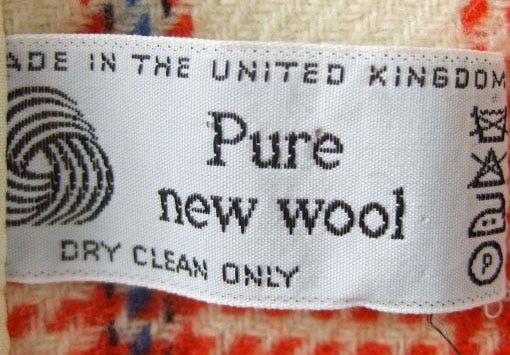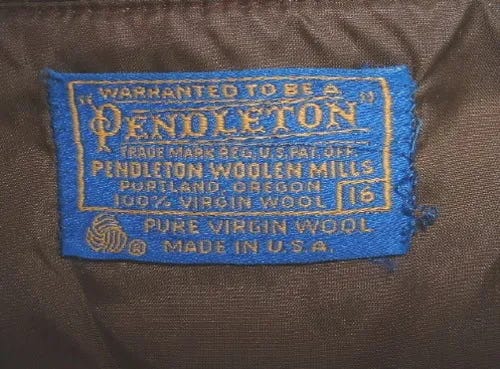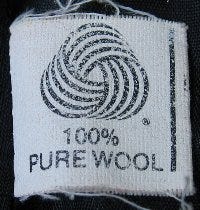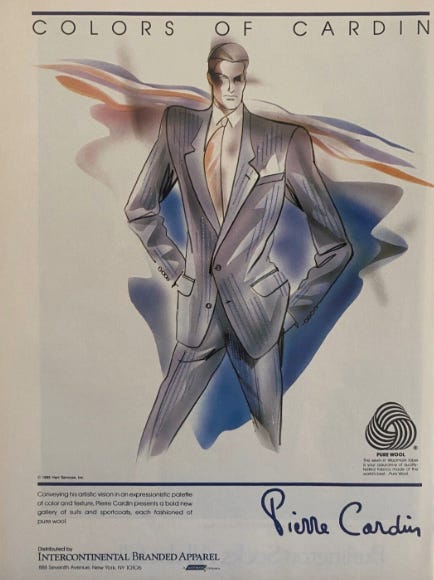
If it’s getting cold out where you live, there’s a good chance you’ve been wearing a little wool lately. It’s long been a staple fiber for low temp dressing, and inside many of those pieces you’ll find a familiar swirly symbol: The Woolmark. Today I’m sharing a brief history of how and why the Woolmark came to be, its many purposes, and how you can use its story as a way to date your vintage clothing.
What is the Woolmark?

The Woolmark is a licensed logo that companies must be approved and pay for to use. Garments bearing the Woolmark label must pass certain benchmarks in order to gain approval for use by The Woolmark Company. The use of the Woolmark can be a sign that a brand is willing to invest in quality control, however, plenty of brands that produce genuine wool products don’t use the Woolmark. The symbol can be found on the labels and tags of wool clothing, accessories, and home goods like blankets. Sometimes it’s a seperate label, other times the symbol is incorporated on to a brand’s existing label design and colors.




The Woolmark serves a few primary purposes: certification, promotion of wool, and support of wool growers and wool research. Brands invest in use of the Woolmark as a way to indicate quality control, and the money goes towards initiatives created by an organization that represents wool farmers.
The Woolmark was a key component of a big marketing shift by the wool industry. The symbol was formed in direct response to the synthetic fiber boom of the 50’s and 60’s. Synthetics like acrylic and polyester had cut into the popularity and profits of natural fibers like wool and cotton. The Woolmark label was an attempt to set wool apart from its synthetic competitors in terms of value, quality, manufacturing and production practices. Genuine wool is generally much more expensive than the same product made of a synthetic imitation, and the Woolmark acts as a way to help certifying the value of a pricier garment. Wool positioned itself through certification, advertisement, and research as the smarter, more luxurious choice.
Keep reading with a 7-day free trial
Subscribe to 1-800-VINTAGE to keep reading this post and get 7 days of free access to the full post archives.






